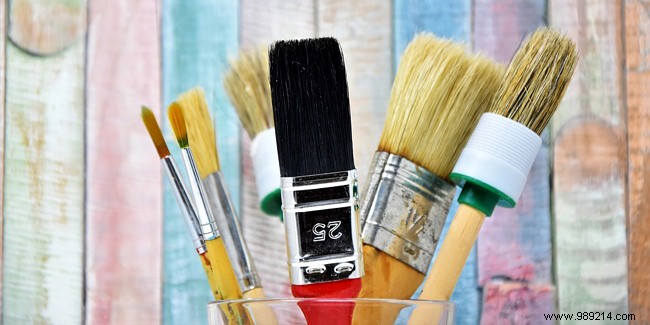There are no good workers without good tools, nor good painters without good brushes... hence the need to clean them after each use, and to store them carefully. Otherwise, beware of rock-hard hair! In partnership with www.ctendance.fr we tell you everything to take care of your brushes.

Quality brushes, whether they are spalters, codtails or refinish thumbs, have a fairly long life expectancy, provided they are properly maintained. In the absence of a complete "toilet", traces of old paint may reappear during subsequent uses.
The most common paints are of the acrylic, epoxy or glycerophtalic type. In the first case, the tools can be cleaned with water and in the second, with White-Spirit.
Before each painting job, beat the tuft to air it and remove loose hairs. Start by painting on a board or paper to evacuate the last loose bristles.
Between two coats, let the tool rest in a container filled with thinner, without crushing the tuft which must retain its initial shape. The ideal is to suspend the brush by the hole in its handle (even if it means drilling one for the occasion) in order to soak the hairs without them touching the bottom of the container. You can also adopt the methods of professionals who immerse the brushes in water, even impregnated with a solvent-based paint.
The tuft does not dry out of contact with the air, a wipe of the cloth is then enough to sponge it before resuming the application. Another solution is to lock it in a plastic bag emptied of its air.
Unload the tool by wiping it with a rag or painting cardboard, newspaper, etc.
Then immerse its tuft in a pot of thinner, then rub the hairs in all directions, without crushing them. If the tool is heavily loaded, renew the thinner if necessary. To brush away paint near the ferrule (metal link), use a sharp knife or wire brush.
Don't forget to also clean the ferrule with a cloth soaked in thinner.
As soon as the paint is removed, run the brush through hot soapy water, soaking the bristles in the soap.
Finally, rinse with clear water. This operation drives out the solvent and softens the bristles.
To know:to recover a tool loaded with dried paint, soak it in paint stripper or boil it in vinegar water. The result is however never impeccable, it can be used for cleaning, application of wood treatment products...
Dry the tool by hanging it by the handle. Then store it flat in a box or drawer away from humidity and frost, without creasing its tuft. The best solution is still to wrap it in a clean cloth.
Warning:artists' brushes, used for friezes, trompe-l'oeil, etc., contain bristles of animal origin (polecat, marten, or squirrel), as well as most painting brushes (hair of pork). In both cases, it is better to protect their storage place with an insecticide against moths. These are very fond of animal "fur". For synthetic fiber tools, no risk.
Pay attention to the varnish on the wooden handles. Over time, it can chip and fall into the paint.
Instead, buy tools whose ferrule is made of copper, brass or zinc, metals that are insensitive to rust.